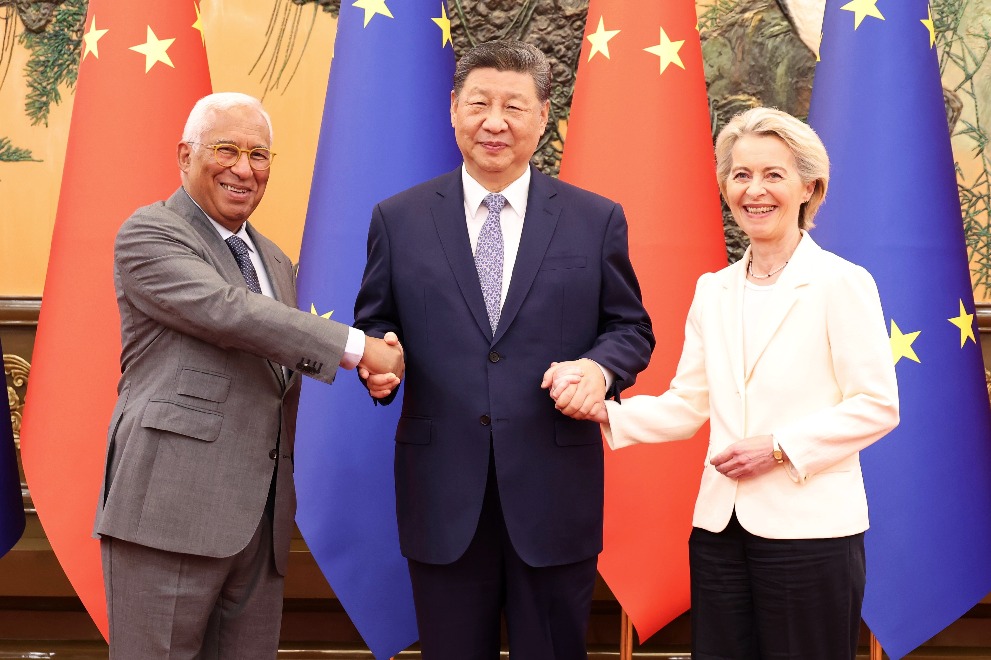Zhejiang's rural vitalization inspiring for nation
By Li Guoxiang | chinadaily.com.cn | Updated: 2024-02-04 19:33

This year's No 1 central document, as a tradition, focuses on rural vitalization, drawing inspiration from the Green Rural Revival Program in Zhejiang province. The initiative, planned and promoted by Xi Jinping, general secretary of the Communist Party of China Central Committee, when he was the Party secretary of Zhejiang province, can become a model for comprehensive rural vitalization.
The program, which began more than two decades ago, has helped address pressing issues while yielding remarkable results. Initiated to improve village sanitation and farmers' quality of life, it has not only transformed the countryside but also changed urban-rural relations, and enhanced rural production, lifestyle and governance.
Thanks to the rapid development of the private economy in Zhejiang since the launch of reform and opening-up, local farmers had become relatively affluent by the end of the century. But this prosperity had come at the cost of the environment.
To repair the environmental damage, the Green Rural Revival Program was launched in 2003 with the aim of restoring the environmental health of about 10,000 administrative villages in the province within five years. Out of these, about 1,000 villages were earmarked to be developed into moderately prosperous demonstration villages. The comprehensive development plan involved demolishing illegal structures, improving waste and sewage management, shutting down polluting enterprises, building roads and upgrading public facilities.
Zhejiang's unwavering commitment to the program has given birth to scientific rural vitalization. It is focused on targeted improvement of the rural living environment and prevents ecological degradation, embodying the value that lucid waters and lush mountains are as valuable as gold and silver. It has improved rural aesthetics, refined cultural aspects, promoted sustainable industrial development, and strengthened ecological protection.
The impact of the program is evident in the transformation of villages such as Yucun village of Huzhou city in Zhejiang. Once infamous for environmental degradation due to its focus on the "stone economy" — with mountains stripped bare and water resembling "soy sauce broth" — Yucun village has become an environmentally friendly village with the closure of mines and cement factories. Due to its scenic environment, Yucun village today thrives on agri-tourism, showcasing the success of the rural vitalization program.
Zhejiang's efforts to improve the rural environment have not only improved the farmers' quality of life but also spurred comprehensive rural vitalization. In September 2018, the program was honored with the United Nations' highest environmental accolade, the "Earth Guardian Award". The commendation said: This exceptionally successful eco-restoration program shows the transformative power of economic and environmental development together.
With the continuous improvement in its ecological environment, Zhejiang has emerged as a national leader in rural economy. The per capita disposable income of Zhejiang's rural residents soared from 5,431 yuan (about $760) in 2003 to 37,565 yuan in 2022. It maintained the highest position among provinces and autonomous regions for 38 consecutive years.
Zhejiang's success story continues with the "Beautiful Countryside+" initiative, fostering the vibrant development of new agricultural, cultural and tourism models. Zhejiang has established 82 complete agricultural value chains with an output exceeding 1 billion yuan each, providing employment and entrepreneurship for 4.78 million farmers. By early 2023, Zhejiang had trained 47,000 "agricultural innovators" — individuals who after graduating from college engage in agricultural and rural entrepreneurship.
In implementing the No 1 central document, regions across China should learn from the experiences of Zhejiang's Green Rural Revival Program. But while doing so, they need to adjust the program to suit the local conditions, distinguishing between developed and less-developed areas, urban outskirts and traditional rural regions, and grain-producing and non-grain producing areas.
Besides, it is important that the program aligns with local development levels, financial capacities and farmers' needs. As such, a flexible and nuanced strategy needs to be adopted, and the focus should be on ensuring rural construction corresponds to the local economic development level, and avoiding formalism and striving to make achievements for the sake of achievements.
The author is a researcher at the Rural Development Institute, Chinese Academy of Social Sciences. The views don't necessarily reflect those of China Daily.
If you have a specific expertise, or would like to share your thought about our stories, then send us your writings at opinion@chinadaily.com.cn, and comment@chinadaily.com.cn.
























